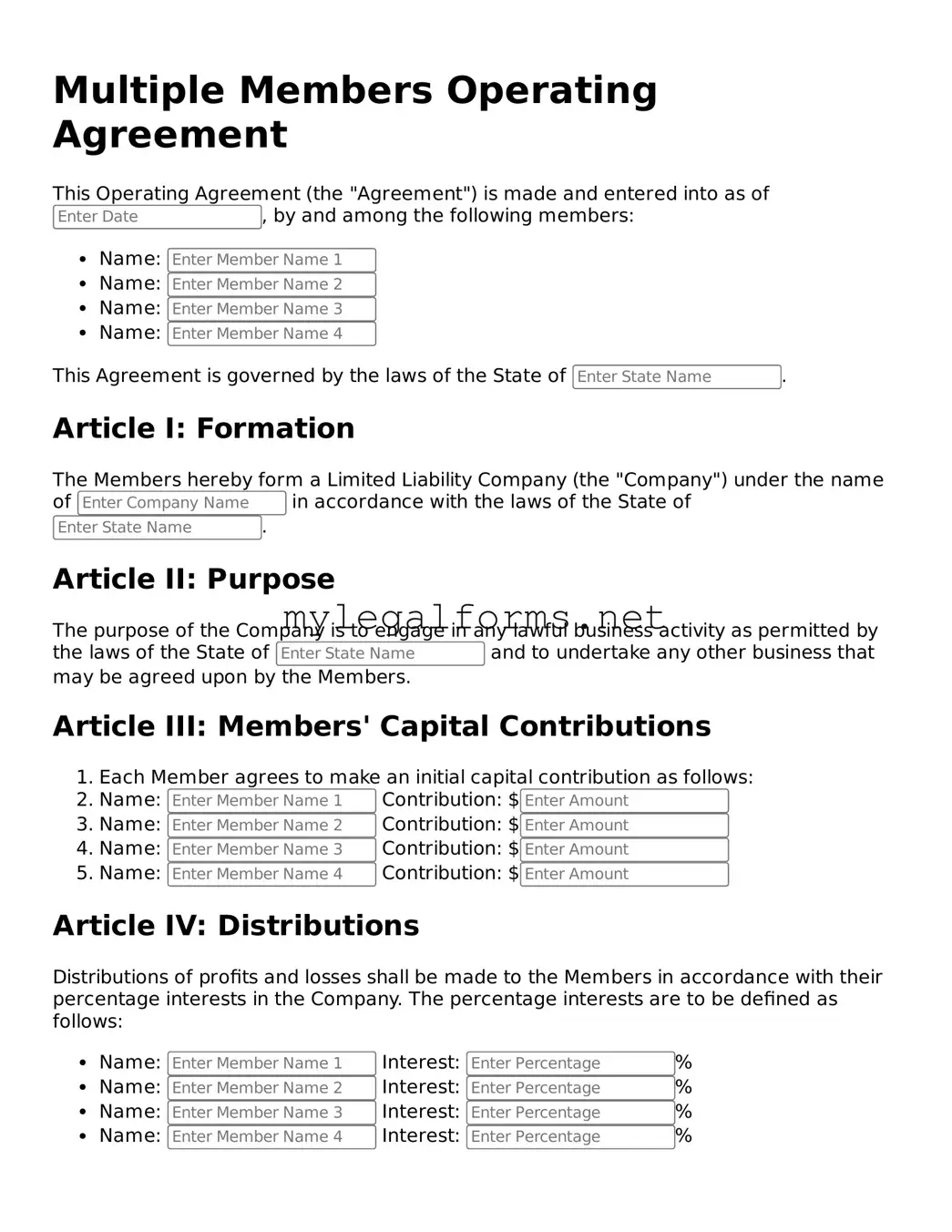Attorney-Approved Multiple Members Operating Agreement Form
The Multiple Members Operating Agreement is a legal document that outlines the management structure and operating procedures for a business with multiple owners. This agreement helps clarify the rights and responsibilities of each member, ensuring smooth operations and minimizing disputes. Understanding this form is essential for anyone involved in a multi-member business venture.
Launch Multiple Members Operating Agreement Editor
